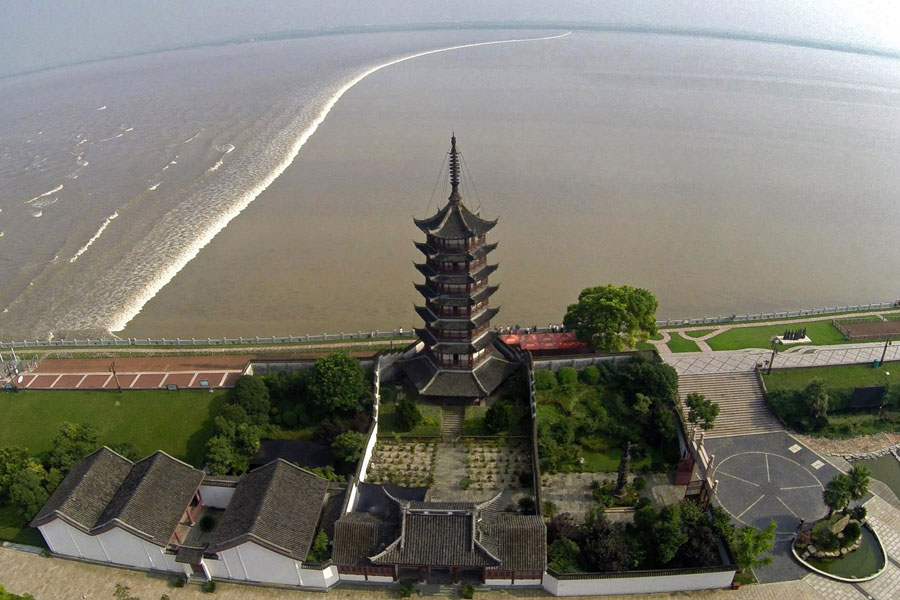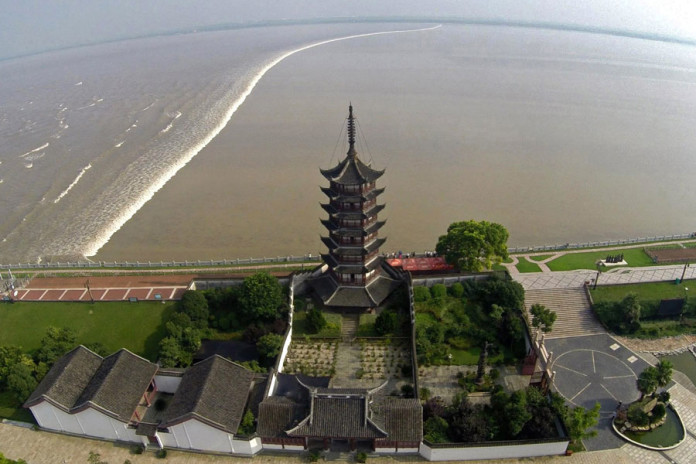If you look at the coastal line of the Chinese mainland, you will find the shape of a horn at Hangzhou Bay, where the Qiantang River enters the East China Sea. It’s here that one will find the world-famous Qiantang bore – the monthly formation of sea-like waves on the brackish water, when tides pull sea water up the Qiantang River against the current.
Every year, in mid-August on the lunar calendar, tourists will come and enjoy the view of the Qiantang bore. The year 2016 is special: the Qiangtang bore coincides with the G20 Summit, held in Hangzhou, capital of East China’s Zhejiang province where the Qiantang bore occurs.

The Qiantang bores are at times so powerful that sight-seers must first plan a route of escape and get ready to run before approaching to experience or photograph the phenomenon. As the tidal forces reach their peak around Aug 18 on the lunar calendar, the waves of the Qiantang bore can be as high as five meters and there can be a gap of 10 meters between the highest and lowest points. The Qiantang bore has already become a natural feature of Haining.
Haining is not the only place suitable for watching the Qiantang bore. After watching the peak of the tide in Haining, you can watch similarly unique tides in several neighbouring areas. In Nanyang town at the southern bank of the Hangzhou Bay, people can watch pillar tides, a unique phenomenon in which the water rising like pillars.






